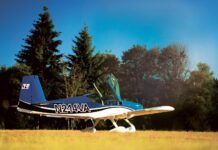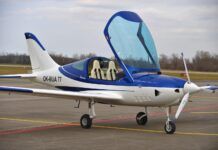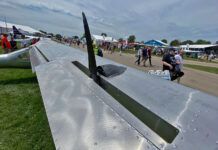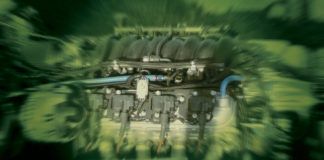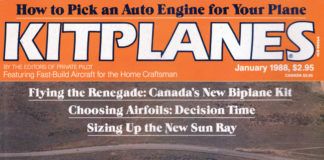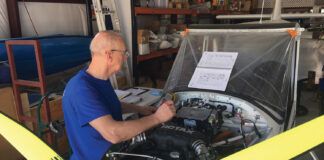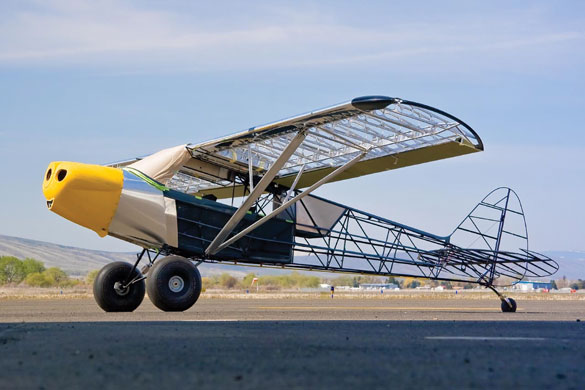
Question: I have a question about Light Sport Aircraft, probably one you get often. As I understand it, there’s Special Light Sport (SLSA) and Experimental Light Sport (ELSA). I know one is factory built and the other is a kit. Beyond that, whats the difference?
Answer: This is a question that really needs to be answered. The Light Sport rules are somewhat confusing, and a few of the kit manufacturers are not helping by the casual wording within their advertisements. Many times they say Experimental and that term is construed to mean ELSA.
What the kit manufacturers mean is that they produce a traditional Experimental/Amateur-Built design-the builder still has to do the majority of the work, remember-and that design happens to meet the weight and performance limitations that apply to Light Sport Aircraft, so it can be flown by a Sport Pilot. I think what causes so much confusion is that they say Light Sport category when what they really mean is Light Sport compliant.
See how this can get out of hand? OK, lets back up and take a more thorough look at the Light Sport regs.
First, consider Special Light Sport Aircraft (referenced in Federal Aviation Regulation Part 21.190). These are aircraft built by a factory to an ASTM standard. While they might look like, or even be based on popular kitbuilts, they are not in any subset of the Experimental category. They are similar to standard production aircraft in that they must be maintained as called for in their particular maintenance manual. The only work you may perform on them is whatever the manufacturer says you can do. Anything beyond what is listed as owner maintenance must be done by a certificated aircraft mechanic or a repairman with a maintenance rating for Light Sport Aircraft (FAR Part 65.107). These aircraft may be used commercially for flight instruction and for towing Light Sport gliders or an unpowered ultralight vehicle.
Those are the factory-built aircraft. Next, consider Experimental Light Sport Aircraft (ref Part 21.191). Now we have to step down again, as there are three subcategories of ELSA.
FAR part 21.191(i)(1) covers the certification of grandfathered ultralight types that don’t meet Part 103, so-called fat ultralights. These aircraft are either too heavy, fly too fast, carry too much fuel, have too many seats or have some other characteristic that keeps them from meeting the ultralight limits. There was a grace period from September 2004 through January 2008 to allow these aircraft to be registered and certificated as ELSAs.
The primary purpose of this rule was to allow conversion of the aircraft that were being used under the ultralight training exemption. These aircraft, if properly certificated, may continue to be used for flight training through January 2010. An aircraft certificated in this manner will have an expiration date of January 31, 2010 on the airworthiness certificate and operating limitations. At some time before the expiration date, these aircraft may have their airworthiness certificate and operating limitations amended to non-commercial use. It is very important that this be done before the expiration date, because an expired airworthiness certificate cannot be amended.
The second subcategory of ELSA falls under Part 21.191(i)(2). These aircraft have been assembled from an ELSA kit. Before a manufacturer can offer an ELSA kit, the company must first complete and certificate an SLSA-no approved, conforming first example, no kit. Moreover, the kit will be based precisely on this aircraft. This is by far the most misunderstood example of Light Sport Aircraft, and we will discuss it further momentarily.
Third is the downgraded SLSA. (FAR Part 21.191(i)(3)). These aircraft began life as a factory-built Special Light Sport Aircraft and have been re-certificated as an ELSA. After recertification, this aircraft is no longer subject to the strict maintenance rules of the manufacturer, but it may no longer be used commercially because it is now in the Experimental category as an ELSA.
Now let’s get back to the kitbuilt ELSA. To qualify in this subcategory the kit need not meet the major portion rule of Experimental/Amateur-Built, but it must be built precisely in accordance with the plans and instructions provided by the kit manufacturer. There can be no changes or modifications. When presented for certification the completed aircraft must be an exact clone of the SLSA from which the kit was derived. Same engine, same prop, same instruments, same avionics, etc. Any options or accessories must be approved in writing by the kit manufacturer.
An applicant for ELSA certification under 21.191(i)(2) must provide extensive evidence that the aircraft meets all applicable requirements. Builders must show that they have followed the plans and assembly instructions to the letter. They must supply the aircrafts operating instructions, the aircrafts maintenance and inspection procedures, the manufacturers statement of compliance for the kit and the aircrafts flight training supplement.
There are additional requirements if the kit is supplied by a foreign manufacturer. FAR Part 21.193(e) lists the required evidence that must be presented.
Please send your questions for DAR Asberry to [email protected] with Ask the DAR in the subject line.



